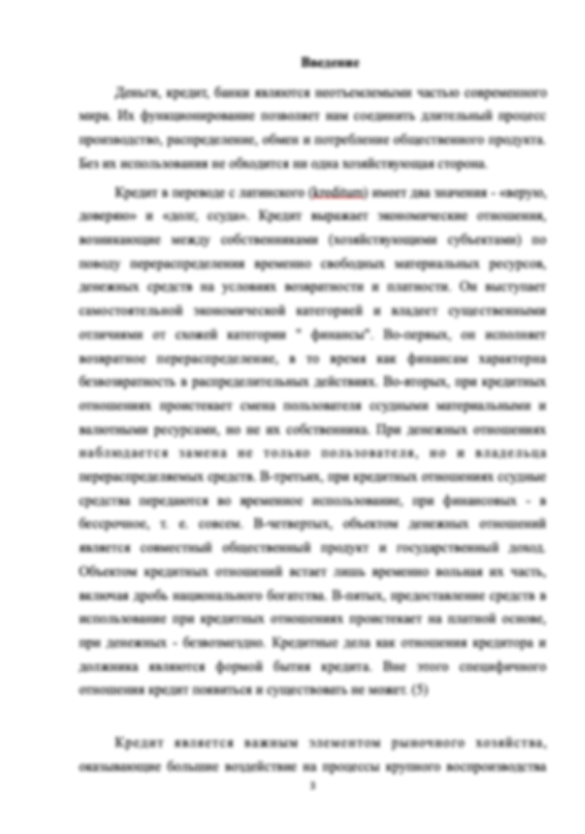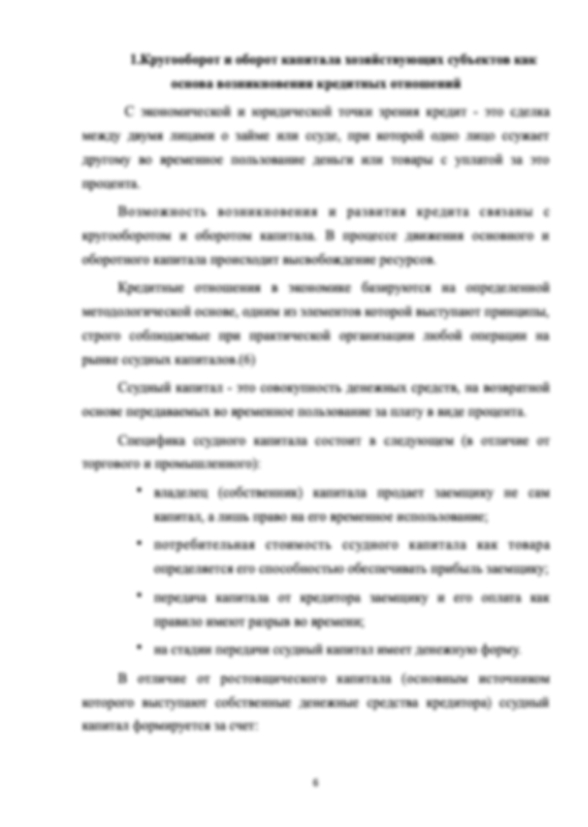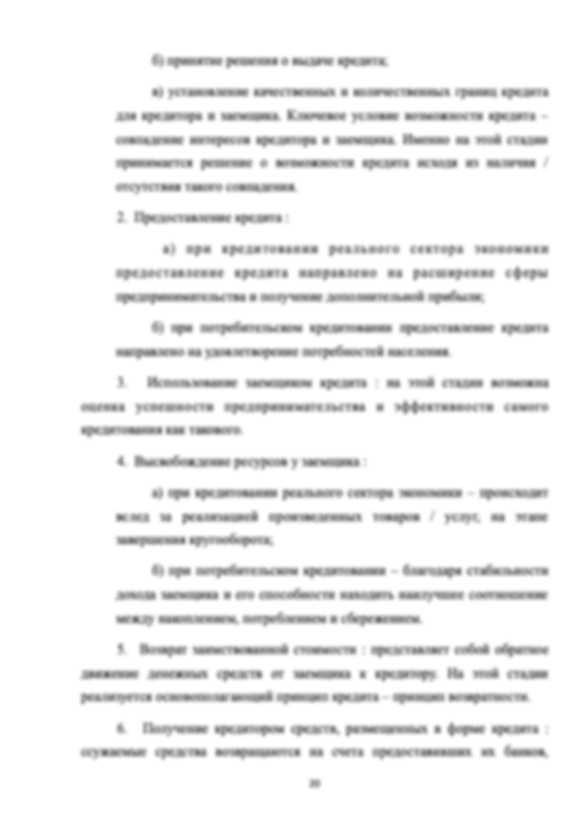Благодарим автора за выполненную курсовую работу по китайскому языку! Работа сдана в срок ,всегда быстро выходит на контакт, приятное сотрудничество, профессиональный подход.
Информация о работе
Подробнее о работе

Calibration of predictions in sports
- 40 страниц
- 2016 год
- 91 просмотр
- 0 покупок
Гарантия сервиса Автор24
Уникальность не ниже 50%
Фрагменты работ
Sporting achievements, which will in the near or distant future in a particular sport, always interested scientists, coaches and athletes.
This is understandable because of what will be sporting achievements in the sport after 2, 4, 8, 12 or more years, largely depends on strategy and tactics for the selection and training of future contenders for the world and Olympic medals.
For example, to prepare a high jumper, having a chance to medal in 2012, must be at least roughly to know as early as 2005, the level at which the fight will take place at these competitions. If among the jumper will win medals athletes who have overcome the bar at a height of 2,55-2,60 and the average age of the champions and finalists of the Olympic Games in the sport is 1921, then in 2005 to take stock of 13-14 -year-old capable of jumpers and prepare them to conquer this height..
Look to the future record of achievements possible with the help of sports prognostics. This is one of the very interesting and promising trends in sports science, which especially in the last decade developing intensively in many countries around the world.
At present, the major institutions are special research units (laboratories, sectors), whose responsibilities include the development of forecasts in the field of physical culture and sports. The object of study - elite sport.
The object of study- Problems of forecasting the highest achievements in sport.
Subject of research: To study the forecasting of of the results in the sphere of sports
Tasks:
1. Expand the concept of forecasting
2. To study the methods of forecasting
3. To consider the factors predicting higher sporting achievements
1. Introduction 3
1. The essence of forecasting 4
1.1.The concept of forecasting 4
1.2. Forecasting Methods 5
1.3. Factor as a predictor of sport achievement 7
2 Description of the three methods of forecasting 9
2.1 Market Forecast 9
2.2 Tipsters 11
3 Description of the Data 13
3.1 Data Set 13
3.2 Calculations of the Prediction Market Forecasts 14
3.3 Calculations of the Betting Market Forecasts 18
4 Forecast Accuracy of Three Methods 20
4.1 Evaluation Criteria 20
4.2 Forecast Accuracy of Each Method 21
4.3 Forecast Accuracy of Combinations of the Methods 23
4.3.1 Accuracy of Weighting-Based Combined Forecasts 23
4.3.2 Accuracy of Rule-Based Combined Forecasts 24
5. Results 26
5.1 Football 26
5.2 Baseball 31
Conclusions 38
References 40
One of the most important tasks of forecasting sporting achievements
It is to increase the accuracy of calculations. As is known, the accuracy of the forecast depends on the length of time series, and the period of retrospection period anticipation, forecasting method, and other factors [2]. General opinion on how these factors affect the efficiency of higher prediction results, no. For example, some scientists believe that the longer the period of history (20-30 years), the more reliable the forecast. Others believe that the outlook for the future is better to include the next two to three years, and therefore forecasting time series does not need a long duration. Third
They find it impossible to describe the long time series of a single equation, and assume expanded into separate simpler parts with a duration of 4-8 years. This gives allegedly possible to describe those using linear equations and parabolas of second and third orders.
There are currently poorly understood and the question of the optimum ratio of the length of the period of retrospection and anticipation during the period predicting the results in a particular sport. Note that in general prognostics experts suggest taking them equal to or choose the term period, equal to 1/3 of the number of reported data [2]. Sometimes out that forecasting period should not exceed the length of the time series and time series must be at least 10 years.
In particular, the Table. 8 - 9 shows that in spite of the projected long enough period (up to 30 years), mean forecast error, in most cases, both males and females is low. Noteworthy is the fact that the reduction of the forecast period and the increase in the period retrospection it decreases.
The accuracy of forecasts obtained by expert assessments and computer modeling, higher than the accuracy of linear extrapolation of time series. The accuracy of forecasts developed by extrapolation method, increases with decreasing the lead time of the forecast.
These tables indicate that the value of the average error in the forecast track and field disciplines in women than in men.
Thus, on the basis of the materials discussed in this chapter
We can draw the following conclusions:
1. Prediction of sports the highest achievements in sports, with the metric system of measurement, despite its apparent simplicity, is a very complex and poorly understood problem, although she devoted many publications. The reason - the high level of uncertainty in the dynamics of growth results in the individual sports disciplines and the conditionality of development by many factors, the impact of which is not always possible to establish and formalize.
2. In assessing the overall positive forecasts of world achievements and results of winners and prize-winners of the Olympic Games, made in the last three decades, we have to note that in most cases they were unreal. Their authors were unable to avoid the blunders and miscalculations in anticipation of higher future sports achievements.
3. Conduct us a posteriori verification of forecasts shown their accuracy, ie, the degree of compliance with the predicted and actual results will depend on the specific sport discipline and the nature of the dynamics of growth of world and Olympic records (straight, -foot, curved), gender of athletes, the duration of the period of prehistory
(Flashbacks), based on which the forecast is made, and the forecast period - the period of pre-emption, the chosen methods of forecasting and availability
Information about accelerating and inhibiting factors affecting the development of the sport of the highest achievements
[1] K. J. Arrow, R. Forsythe, M. Gorham, R. Hahn, R. Hanson, J. O. Ledyard, S. Levmore, R. Litan, P. Milgrom, F. D. Nelson, G. R. Neumann, M. Ottaviani, T. C. Schelling, R. J. Shiller, V. L. Smith, E. Snowberg, C. R. Sunstein, P. C. Tetlock, P. E. Tetlock, H. R. Varian, J. Wolfers, and E. Zitzewitz. The promise of prediction markets. Science, 320(5878):877–878, 2008.
[2] J. E. Berg, R. Forsythe, F. D. Nelson, and T. A. Rietz. Results from a dozen years of election futures markets research. In C. R. Plott and V. Smith, editors, Handbook of Experimental Economics Results, Volume 1, pages 742–751. North Holland, 2008.
[3] J. E. Berg and T. A. Rietz. Prediction markets as decision support systems. Information Systems Frontiers, 5(1):79–93, 2003.
[4] Center for Gaming Research, University of Nevada, Las Vegas. 2008 Nevada gaming statewide revenue breakdown.
[5] Y. Chen, C. Chu, T. Mullen, and D. Pennock. Information markets vs. opinion pools: An empirical comparison. In Proceedings of the 6th ACM conference on Electronic commerce, page 67. ACM, 2005.
[6] Y. Chen and A. M. Kwasnica. Security design and information aggregation in markets, 2006.
[7] J. D. Christiansen. Prediction markets: Practical experiments in small markets and behaviours observed. Journal of Prediction Markets, 1(1), 2006.
[8] R. Clemen. Combining forecasts: A review and annotated bibliography. International Journal of Forecasting, 5(4):559–583, 1989.
[9] V. Dani, O. Madani, D. Pennock, S. Sanghai, and B. Galebach. An empirical comparison of algorithms for aggregating expert predictions. In Proceedings of the Conference on Uncertainty in Artificial Intelligence (UAI). Citeseer, 2006.
[10] R. S. Erikson and C. Wlezien. Are political markets really superior to polls as election predictors? Public Opinion Quarterly, 72(2):190–215, 2008.
[11] E. Fama. The behavior of stock-market prices. Journal of business, 38(1):34, 1965.
[12] M. Ferrari and A. Rudd. Investing in movies. Journal of Asset Management, 9(1):22–40, 2008.
[13] R. Forsythe and R. Lundholm. Information aggregation in an experimental market. Econometrica, 58(2):309–347, 1990.
[14] R. Forsythe, F. D. Nelson, and G. R. Neumann. Anatomy of an experimental political stock market. American Economic Review, 82(5):1142–1161, 1992.
[15] R. Forsythe, T. A. Rietz, and T. W. Ross. Wishes, expectations, and actions: A survey on price formation in election stock markets. Journal of Economic Behavior & Organization, 39:83–110, 1999.
[16] A. Gelman, J. Carlin, H. Stern, and D. Rubin. Bayesian data analysis. Chapman & Hall, 2003.
[17] S. Goel, J. Hofman, S. Lahaie, D. M. Pennock, and D. J. Watts. What can search predict? Technical Report.
[18] A. Graefe and J. S. Armstrong. Predicting elections from the most important issue facing the country, 2009.
[19] R. W. Hahn and P. C. Tetlock, editors. Information Markets: A New Way of Making Decisions. AEI-Brookings Press, 2006.
[20] R. Hanson. Decision markets. IEEE Intelligent Systems, 14(3):16–19, 1999.
[21] R. Hanson and R. Oprea. Manipulators increase information market accuracy, 2004.
[22] R. Hanson, R. Oprea, and D. Porter. Information aggregation and manipulation in an experimental market. Journal of Economic Behavior & Organization, 60(4):449–459, 2006.
[23] F. A. Hayek. The use of knowledge in society. American Economic Review, 35(4):519–530, 1945.
[24] P. Healy, J. Ledyard, S. Linardi, and R.J.Lowery. Prediction market alternatives for complex environments. In Conference on Auctions, Market Mechanisms and Their Applications, 2009.
[25] J. Howe. Crowdsourcing: Why the Power of the Crowd Is Driving the Future of Business. Crown Business, New York, 2008.
[26] J. C. Jackwerth and M. Rubenstein. Recovering probability distributions from options prices. Journal of Finance, 51(5):1611–1631, 1996.
[27] F. Kleeman, G. G. Voss, and K. Rieder. Un(der)paid innovators: The commercial utilization of consumer work through crowdsourcing. Science, Technology & Innovation Studies, 4(1):5–26, 2008.
[28] J. Ledyard, R. Hanson, and T. Ishikida. An experimental test of combinatorial information markets. Journal of Economic Behavior & Organization, 69(2):182–189, 2009.
[29] S. Makridakis and M. Hibon. The M3-Competition: results, conclusions and implications. International Journal of Forecasting, 16:451–476, 2000.
[30] S. Makridakis, M. Hibon, and C. Moser. Accuracy of forecasting: An empirical investigation. Journal of the Royal Statistical Society. Series A, 142(2):97–145, 1979.
[31] S. Makridakis, R. M. Hogarth, and A. Gaba. Forecasting and uncertainty in the economic and business world. International Journal of Forecasting, In press, 2009.
[32] J. Muth. Rational expectations and the theory of price movements. Econometrica, 29(3):315–335, 1961.
[33] K. Oliven and T. A. Rietz. Suckers are born, but markets are made: Individual rationality, arbitrage and market efficiency on an electronic futures market. Management Science, 50(3):336–351, 2004.
[34] D. M. Pennock, S. Debnath, E. J. Glover, and C. L. Giles. Modeling information incorporation in markets, with application to detecting and explaining events. In Proceedings of the Eighteenth Conference on Uncertainty in Artificial Intelligence, pages 405–413, Edmonton, CA, 2002. Association for Uncertainty in Artificial Intelligence.
[35] C. R. Plott and S. Sunder. Efficiency of experimental security markets with insider information: An application of rational-expectations models. Journal of Political Economy, 90(4):663–698, 1982.
[36] C. R. Plott and S. Sunder. Rational expectations and the aggregation of diverse information in laboratory security markets. Econometrica, 56(5):1085–1118, 1988.
[37] C. Polk, R. Hanson, J. Ledyard, and T. Ishikida. Policy analysis market: An electronic commerce application of a combinatorial information market., 2003. [38] P. W. Rhode and K. S. Strumpf. Manipulating political stock markets: A field experiment and a century of observational data, 2006.
[39] R. Roll. Orange juice and weather. American Economic Review, 74(5):861–880, 1984.
[40] R. N. Rosett. Gambling and rationality. Journal of Political Economy, 73(6):595–607, 1965.
Форма заказа новой работы
Не подошла эта работа?
Закажи новую работу, сделанную по твоим требованиям


